特朗普公布移民新计划演讲
上下滑动,查看英文演讲稿
Thank you very much, everybody. Thank you. Please. Thank you. Thank you very much.
We’re here on this very beautiful spring day in the Rose Garden to unveil our plan to create a fair, modern, and lawful system of immigration for the United States. And it’s about time. (Applause.)
If adopted, our plan will transform America’s immigration system into the pride of our nation and the envy of the modern world. Our proposal builds upon our nation’s rich history of immigration, while strengthening the bonds of citizenship that bind us together as a national family.
Throughout our history, we have proudly welcomed newcomers to our shores. Out of many people, from many places, we have forged one people and one nation under God, and we’re very proud of it. (Applause.) We share the same home, we share the same destiny, and we pledge allegiance to the same, great American flag. (Applause.)
Our policies have turbo-charged our economy. Now, we must implement an immigration system that will allow our citizens to prosper for generations to come.
Today, we are presenting a clear contrast: Democrats are proposing open borders, lower wages, and, frankly, lawless chaos. We are proposing an immigration plan that puts the jobs, wages, and safety of American workers first. (Applause.)
Our proposal is pro-American, pro-immigrant, and pro-worker. It’s just common sense. It will help all of our people, including millions of devoted immigrants, to achieve the American Dream.
We are grateful to be joined this afternoon by a tremendous number of people from the House, the Senate, and my Cabinet. And I love you all, but I won’t introduce you all because I’ll be here all day long. (Laughter.) But you’re all here.
Our plan achieves two critical goals. First, it stops illegal immigration and fully secures the border. And, second, it establishes a new legal immigration system that protects American wages, promotes American values, and attracts the best and brightest from all around the world.
The proposal begins with the most complete and effective border security package ever assembled by our country — or any other country, for that matter. (Applause.) It’s so important.
This plan was not developed, I’m sorry to say, by politicians. We have a lot of politicians. But you respect the people and you know the people that have developed this plan. It was designed with significant input from our great law enforcement professionals to detail what they need to make our border — which is 100 percent operationally secure. One hundred percent.
Everyone agrees that the physical infrastructure on the border and the ports of entry is gravely underfunded and woefully inadequate. We scan only a small fraction of the vehicles, goods, and all of the other things coming across, including people. And, sadly, the drugs pour across our border. We’re going to stop it.
Investment in technology will ensure we can scan 100 percent of everything coming through, curbing the flow of drugs and contraband, while speeding up legal trade and commerce. It’s the most heavily traded — monetarily — border anywhere in the world, and it’s not even close.
To make certain that we are constantly making the upgrades we need, our proposal creates a permanent and self-sustaining border security trust fund. This will be financed by the fees and revenues generated at the border crossings itself.
Importantly, we’re already building the wall, and we should have close to 400 miles built by the end of next year, and probably even more than that. It’s going up very rapidly. (Applause.)
And I want to thank the Army Corps of Engineers. They’re doing a fantastic job on the wall. And that’s a wall that is desperately needed.
As we close the gaps in our physical framework, we must also close the gaps in our legal framework. Critical to ending the border crisis is removing all incentives for smuggling women and children. Current law — (applause). That’s right. That’s right. Women and children. People have no idea how bad it is unless you’re there, and unless you are a member of law enforcement. They see it every day, and they can’t believe what they see.
Current law and federal court rulings encourage criminal organizations to smuggle children across the border. The tragic result is that 65 percent of all border-crossers this year were either minors or adults traveling with minors. Our plan will change the law to stop the flood of child smuggling and to humanely reunite unaccompanied children with their families back home — and rapidly. As soon as possible. (Applause.)
We must also restore the integrity of our broken asylum system. Our nation has a proud history of affording protection to those fleeing government persecutions. Unfortunately, legitimate asylum seekers are being displaced by those lodging frivolous claims — these are frivolous claims — to gain admission into our country.
Asylum abuse also strains our public school systems, our hospitals, and local shelters, using funds that we should, and that have to, go to elderly veterans, at-risk youth, Americans in poverty, and those in genuine need of protection. We’re using the funds that should be going to them. And that shouldn’t happen. And it’s not going to happen in a very short period of time. Have to get this approved.
My plan expedites relief for legitimate asylum seekers by screening out the meritless claims. If you have a proper claim, you will quickly be admitted; if you don’t, you will promptly be returned home.
Crucially — (applause) — our plan closes loopholes in federal law to make clear that gang members and criminals are inadmissible. These are some of the worst people anywhere in the world — MS-13 and others. Inadmissible. Not coming in. We’re taking them out all the time by the thousands, a year, but they come in. They are no longer admissible. And for criminals already here, we will ensure their swift deportation. (Applause.)
We will keep our communities safe. Americans can have complete and total confidence that under this plan, the borders will finally be fully and totally secured. (Applause.)
And I know a number of our Republican friends and others — Lindsey, I see you sitting right there, and Steve, you’re working on a plan — an immediate plan. A smaller plan, but a very immediate plan to stop it as of this afternoon. So, as fast as you can get something done. This is the big, beautiful, bold plan, but we need something very quickly. And if you can get it done, that would be fantastic. Okay? Thank you. (Applause.) Appreciate you working on it.
A topic of less discussion in national media, but of vital importance to our country, is our legal immigration system itself. Our plan includes a sweeping modernization of our dysfunctional legal immigration process. It is totally dysfunctional. The system will finally be fair, transparent, and promote equality and opportunity for all.
Every year, we admit 1.1 million immigrants as permanent legal residents. These green card holders get lifetime authorization to live and work here and a five-year path to American citizenship. This is the most prized citizenship anywhere in the world, by far.
Currently, 66 percent of legal immigrants come here on the basis of random chance. They’re admitted solely because they have a relative in the United States. And it doesn’t really matter who that relative is. Another 21 percent of immigrants are issued either by random lottery, or because they are fortunate enough to be selected for humanitarian relief.
Random selection is contrary to American values and blocks out many qualified potential immigrants from around the world who have much to contribute. While countless — and you wouldn’t believe how many countries, like Canada, create a clear path for top talent. America does not.
Under the senseless rules of the current system, we’re not able to give preference to a doctor, a researcher, a student who graduated number one in his class from the finest colleges in the world — anybody. We’re not able to take care of it. We’re not able to make those incredible breakthroughs. If somebody graduates top of their class from the best college, sorry, go back to your country. We want to keep them here.
Companies are moving offices to other countries because our immigration rules prevent them from retaining highly skilled and even, if I might, totally brilliant people. We discriminate against genius. We discriminate against brilliance. We won’t anymore, once we get this passed. And we hope to get it passed as soon as possible. (Applause.)
Some of the most skilled students at our world-class universities are going back home because they have no relatives to sponsor them here in the United States. And that’s the only way. We want these exceptional students and workers to stay, and flourish, and thrive in America. (Applause.) Thank you.
As a result of our broken rules, the annual green card flow is mostly low-wage and low-skilled. Newcomers compete for jobs against the most vulnerable Americans and put pressure on our social safety net and generous welfare programs.
Only 12 percent of legal immigrants are selected based on skill or based on merit. In countries like Canada, Australia, and New Zealand — and others — that number is closer to 60 and even 70 and 75 percent, in some cases.
The biggest change we make is to increase the proportion of highly skilled immigration from 12 percent to 57 percent, and we’d like to even see if we can go higher. (Applause.) This will bring us in line with other countries and make us globally competitive.
At the same time, we prioritize the immediate family of new Americans — spouses and children. The loved ones you choose to build a life with, we prioritize. And we have to do that. They go right to the front of the line. Right to the front of the line, where they should be. (Applause.)
America’s last major overhaul of our legal admissions policy was 54 years ago. Think of that. So a major update — and that’s what this is: merit system and a heart system — is long overdue.
The millions of legal immigrants who have come to America over the past half century are now cherished members of our national family. Going forward — (applause) — it is their interest, and in their interest, and their children’s interest, to adopt a green card system that promotes a rising standard of living for all of our citizens.
Three in four new jobs at the end of last year went to Americans previously out of the workforce. Our economy is better probably than it ever has been in the history of our country. (Applause.) And because of that great economy, we’re able to do things that nobody ever thought possible before, and that’s what we’re going to do for immigration, finally.
Wages are rising but our current immigration system works at cross-purposes, placing downward pressure on wages for the working class, which is what we don’t want to do.
Last year, we also passed historic criminal justice reform. (Applause.) And we had tremendous backing — bipartisan — from Democrats, Republicans, conservatives, liberals. I guess we could also use the word “progressives.” A new word that’s come about.
Americans with criminal records are getting a second chance at life in higher numbers than ever before. Unfortunately, the current immigration rules allow foreign workers to substitute for Americans seeking entry-level jobs. So, foreign workers are coming in and they’re taking the jobs that would normally go to American workers.
America’s immigration system should bring in people who will expand opportunity for striving, low-income Americans, not to compete with those low-income Americans. (Applause.)
Our proposal fulfills our sacred duty to those living here today, while ensuring America remains a welcoming country to immigrants joining us tomorrow. And we want immigrants coming in. We cherish the open door that we want to create for our country, but a big proportion of those immigrants must come in through merit and skill. (Applause.)
The White House plan makes no change to the number of green cards allocated each year. But instead of admitting people through random chance, we will establish simple, universal criteria for admission to the United States. No matter where in the world you’re born, no matter who your relatives are, if you want to become an American citizen, it will be clear exactly what standard we ask you to achieve. It will be made crystal clear. (Applause.)
This will increase the diversity of immigration flows into our country. We will replace the existing green card categories with a new visa, the Build America visa — which is what we all want to hear. (Applause.)
Like Canada and so many other modern countries, we create an easy-to-navigate points-based selection system. You will get more points for being a younger worker, meaning you will contribute more to our social safety net. You will get more points for having a valuable skill, an offer of employment, an advanced education, or a plan to create jobs.
We lose people that want to start companies, and, in many cases, they’re forced to leave our country; go back, usually, to the country where they came from; and they’ll start up companies, and some of those companies are among the biggest and most successful companies today in the world. They could’ve started them right here in the United States, where they wanted to do it in the first place. Now they’ll have a chance. (Applause.)
Priority will also be given to higher-wage workers, ensuring we never undercut American labor. To protect benefits for American citizens, immigrants must be financially self-sufficient.
Finally, to promote integration, assimilation, and national unity, future immigrants will be required to learn English and to pass a civics exam prior to admission. (Applause.)
Through these steps, we will deliver an immigration system that respects, and even strengthens, our culture, our traditions, and our values.
Four months ago, I had the honor of participating in a swearing-in ceremony for new Americans, right here in the Oval Office. It was a beautiful reminder that American citizenship is the most precious gift our nation has to offer. When we swear in new citizens, we do more than give them a permit; we give them a history, a heritage, a home, and a future of limitless possibilities and potential.
Our nation used to pride ourselves on this capacity: our unique ability to instill the spirit of America into any human heart, into any human being. Many of the Democrats have claimed to be for these concepts at different times in their careers and, in many cases, in very recent history. And I hope that they will end up joining me and all of the people gathered together today in putting politics aside, putting security and wages first, and pursuing these historic reforms. It’s time. (Applause.)
And if for some reason — possibly political — we can’t get the Democrats to approve this merit-based, high-security plan, then we will get it approved immediately after the election, when we take back the House, keep the Senate, and, of course, hold the presidency. (Applause.) Thank you. Thank you. Thank you. Thank you very much.
But wouldn’t it be nice to do it sooner than that? (Laughter.) But it’s not a very long time, is it? Sixteen months.
One of the reasons we will win is because of our strong, fair, and pro-America immigration policy. It’s time to restore our national unity and reaffirm our national purpose. It is time to rebuild our country for all Americans.
Together, we will create an immigration system to make America safer, and stronger, and greater than ever before.
Thank you. God bless you all. Thank you very much.
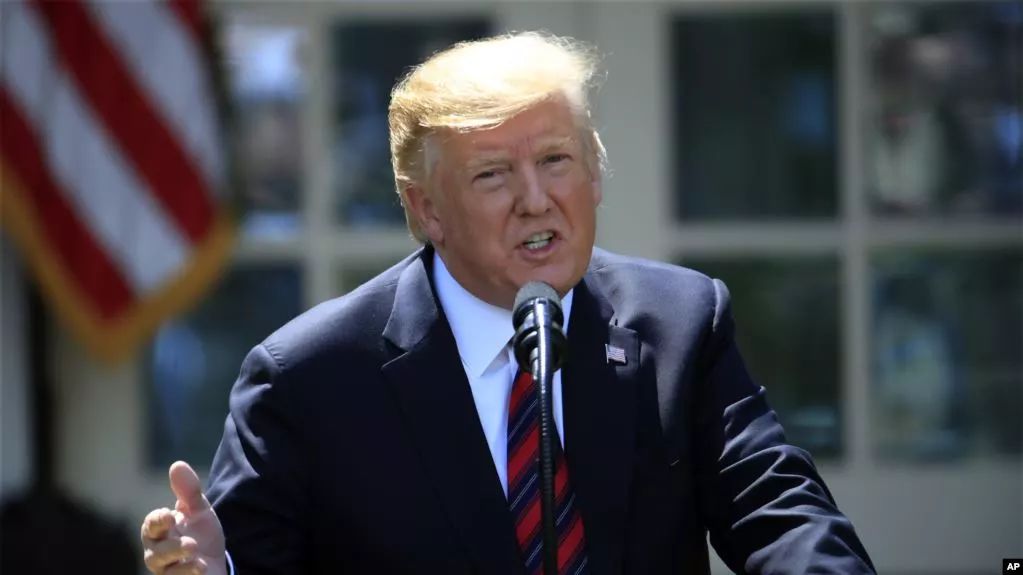
川普在白宫玫瑰花园正式对外公布了受他认可的综合移民改革提案,比起之前国会议员你一言我一语零散的改革提案、或者白宫曾经给过的各种版本改革指导大纲,白宫终于拿出了一套集综合指导与细化内容与一体的相对综合的移民改革方案,改革内容主要集中在:
每年约110万张绿卡总数量不变,大规模调整绿卡分配比例;
大幅度增长高学历、高技能背景的职业移民配额;
取消多元化绿卡抽签项目(diversity-visa lottery);
缩减亲属移民绿卡配额,只能为配偶子女申请移民;
减少难民、庇护绿卡数量;
将受教育程度、英语水平、以及拥有高新工作作为绿卡名额分配的重点考量标准

 具体改革方案:千呼万唤始出来
具体改革方案:千呼万唤始出来
这份综合性移民改革提案,由川普女婿Jared Kushner主导、白宫移民事务顾问Stephen Miller配合完成,主要分为两大部分,美国合法移民改革以及打击非法移民保卫美国边境安全。
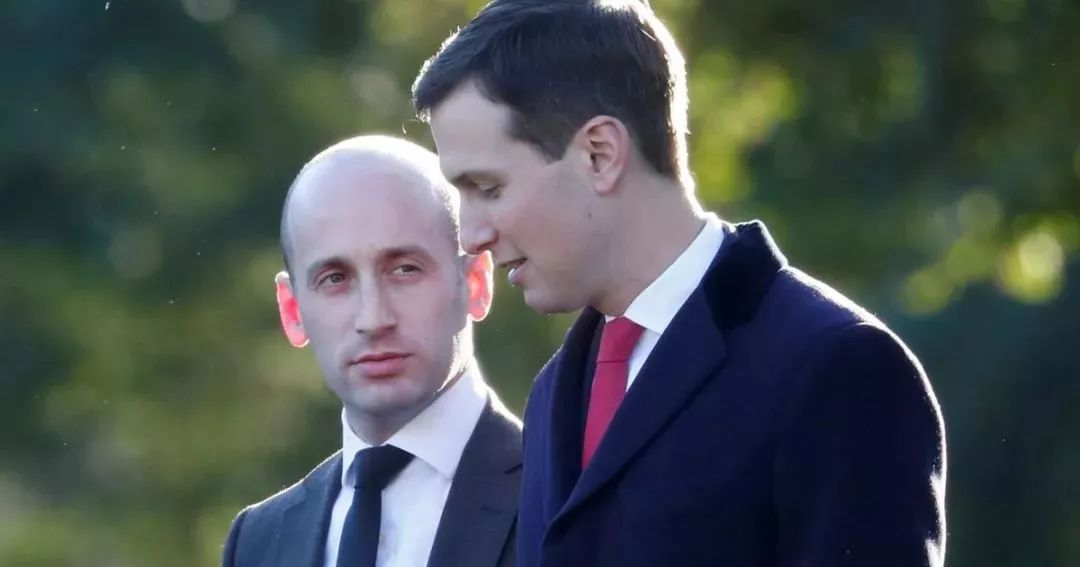
图中为Jared Kushner Stephen Miller,版权属于原作者
 合法移民改革
合法移民改革
大幅度调整移民配给制度
目前美国移民签证分配中,仅有12%左右的移民是因为高技能而获得绿卡,22%的绿卡分配给了难民、庇护者以及绿卡抽签,有近66%的绿卡都分配给了亲属移民,川普计划改变这种现状。
在新改革方案中,拥有高技能、通过职业雇佣方式的移民绿卡配比将激增至57%甚至更高;33%的名额留给核心亲属(仅包括配偶和子女),并且提前这类申请的优先级别;10%的名额留给人道主义原因申请者。
全面推行移民申请打分制
实行移民申请打分制度(merit-based),绿卡申请者需要参加考试(Civics Test),依据学历、年龄、健康状况、英语水平、在美国投资状况、是否有美国公司的雇佣offer等条件进行。
川普政府认为这种改革可以大幅度提高美国移民的受教育程度,如果按照这样的方式筛选移民,未来美国移民将会有7成拥有本科或以上的高等学历,也将会大幅度地将移民的平均年薪从现在的$43,000提升至$96,000。
 为“高技能”移民设立特殊签证
为“高技能”移民设立特殊签证
新提案中对“高技能”(high skilled)进行分类,其中包括具有杰出能力的人才(extraordinary talent),美国急需的专业人才(professional and specialized vocation),以及杰出学生(exceptional students),杰出学生将被允许在美国高校就读期间就提出移民申请。

符合这三类别的高技能人才将可以申请一种新的签证类别——建设美国绿卡(Build America Visa),名字听上去有些俗气,不是内容还是挺有吸引力的。
 取消多元化绿卡抽签
取消多元化绿卡抽签
多元化绿卡抽签制度(visa lottery)应该是川普最最最不待见的绿卡种类之一了,每年5万张绿卡全凭运气分配给各国移民申请者,对申请人的学历、财力、犯罪记录做最最初级筛选。职业移民带着家属一年才分配14万张绿卡,每年如此随意任性地给出5万张绿卡,这样好吗?
 非法移民
非法移民
打击非法移民这部分主要内容围绕在美墨边境,进一步将强边境防范,从源头上阻断非法移民进入美国的途径;另外庇护申请得以保留,但从各个维度进行限制、提高申请门槛。
那新加坡有哪些途径申请永久居民呢?
投资移民
GIP
在新加坡移民政策多次改变后,目前,全球商业者计划(GIP)是唯一可直接获取PR的方式。这一计划,需要拥有丰富的商业经历和成功的商业背景。
投资多少钱?
方案 A:250万新币建立新的商业实体,或者扩充现有的商业运营。
方案 B:投资至少250万新币给一支全球商业投资者计划基金。
(目前新币对人民币汇率约为4.79:1)
申请要求:
-
必须拥有三年(或以上)的创业经历
-
提供三年的财务报告(采用的会计事务所必须在新加坡政府的指定列表里)
-
涉及领域要符合新加坡的要求
-
最近一年的营业额达5千万新币,三年来平均营业额也至少有5千万新币
GIP移民的配偶及未婚子女(二十一岁以下),可以作为附属申请人与你同时申请PR,但是男性孩童需要服兵役。父母、已婚子女、超过二十一岁的子女也可以申请5年长期探访准证(LTVP)。
投资移民整个申请周期大概是6-8个月。
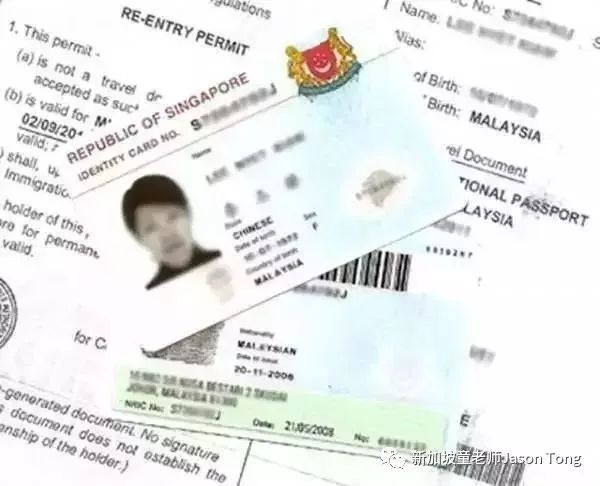
▲PR证件示意图
创业准证
Entrepass
新加坡创业移民,需要5万新币注册资金,注册一家新加坡公司,获得创业准证,然后再申请成为新加坡永久居民(PR)。
对学历无明确要求,但需要有一定工作或经商经验,或者是拥有创新的行业项目。
在达到一定条件后,可为配偶及21岁以下小孩申请家属准证,1年左右之后可申请PR,也可带家属申请PR。
申请要求:
-
必须在新加坡创业
-
必须注册时间不满6个月新公司
-
不符合要求的创业项目:咖啡店,美食中心,食阁巴刹,酒吧,夜总会,卡拉OK,酒廊,足部按摩,按摩院,中国传统医学,针灸,中药配药,职业介绍机构,风水师。
不想创业觉得太操心?只想找个工作做,那么你需要看的是下面的这几种工作准证:
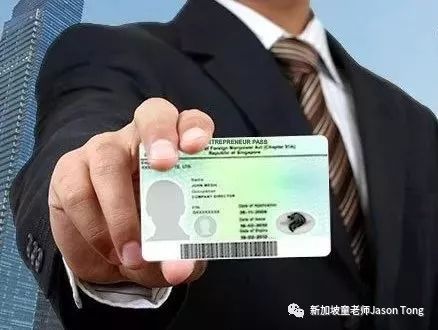
个人化就业准证
Personalised Employment Pass
PEP是人力部开放给外籍专业人士的准证,它没有职位限制(特殊行业,需有相关证书)。PEP准证有效期内,即使换工作,也不需要重新申请准证,只需要通知人力部即可。
申请要求:
-
外国专业人士,在新加坡境外的前一份工作月薪达到18000新币
-
目前持有新加坡就业准证(EP),月薪超过12000新币
-
保证年薪有144000
持有这个准证,没有工作的情况下,也可以在新加坡逗留6个月,在此期间寻找工作。但如果超过6个月没有工作,就必须取消证件。
可为配偶及21岁以下小孩申请家属准证,1年左右之后可申请PR,也可带家属申请PR。
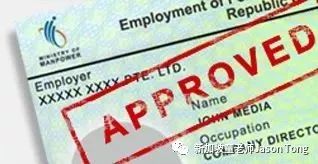
就业准证
Employment Pass
新加坡就业准证(EP)由新加坡人力部颁发,之后可以进一步申请新加坡的永久居留权(PR)。
申请要求:
-
本科或以上学历,有专业证书或者特殊技巧
-
薪水通常要求每月3600新元以上(本地大学毕业申请有优势,月薪略低于3600也可能申请下来,而其他大学毕业生则会需要更高的基本月薪)
-
对年轻人薪资要求较低,而年纪越大经验越多的人,申请准证的薪资要求会随之提高。
2018年1月1日以后,月薪6000以上的EP,才可为配偶和21岁以下的孩子申请家属准证。
月薪12000以上的EP,可为父母申请长期探访准证(LTVP)。工作6个月之后可申请PR(6个月是最短期限,必须要有工资单)。

S准证
S Pass
S Pass是人力部设置的给外国中级技术水准雇员提供的工作准证。
SP在每个公司是有配额要求的。每个服务行业的公司所能拥有的SP准证持有者只能占公司总员工的10%-15%,而其他行业的SP配额最高可达总员工的20%。也就是说,公司至少要有10个或以上的员工,才能申请1到2个SP名额。
更让人头疼的是SP人头税这个问题。雇佣一个SP,雇主就要给政府交$330/月的人头税,若是雇佣的SP人数超过公司总人数的10%,那就要给每个SP交$650/月的人头税。
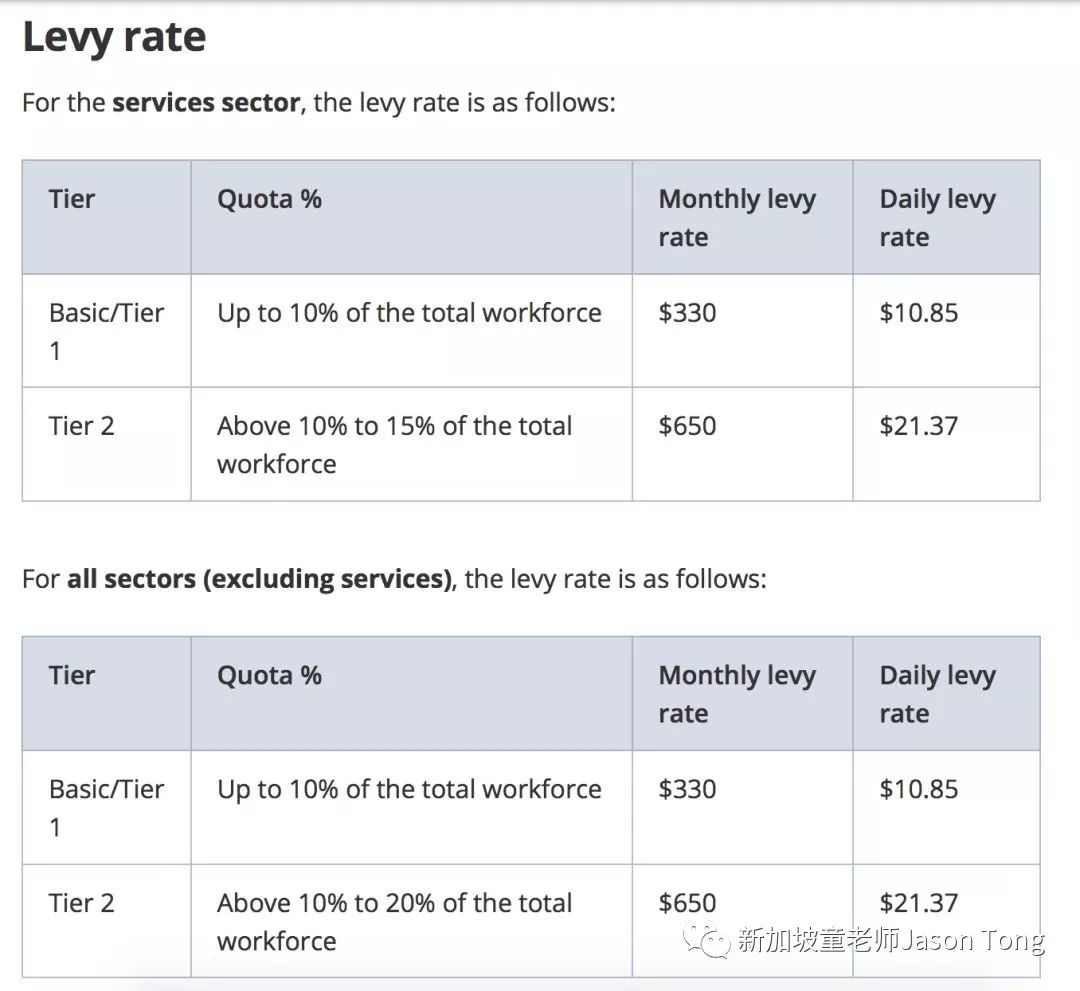
申请要求:
-
学历需要有大专,本科,或者技术资质认证(需要至少一年全职学习获得的技术认证)
-
最低月薪要求:2200新币(2019年将调整为2300新币,2020年将调整为2400新币)
SP的薪水达到6000新币的话,可为配偶及21岁以下小孩申请家属准证。
工作6个月之后可申请PR(6个月是最短期限,如果不是NUS、NTU的本科生,建议还是多工作几年再申请),也可以带上家属申请PR(但是通过率不一定有保证)。
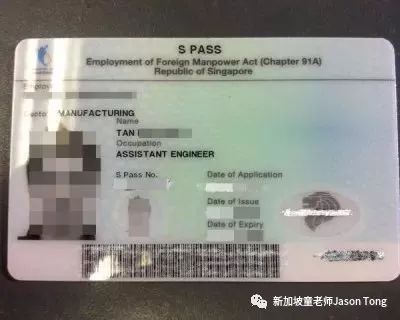
当然还有一类就是家属,通常为新加坡籍人士或新加坡永久居民的配偶, 可由本地配偶担保申请绿卡。

那新加坡可以申请PR吗?
2017年年底,新加坡移民局(ICA)先后出台两项新政,分别是:国际留学生满足条件可以直接申请PR;持PR的国际生学生,在读书期间就可以直接申请新加坡公民。
对于新加坡留学生来说这是一个好消息,但是想要获得PR或是成为新加坡公民需要满足一定的条件。
留学生申请PR需要满足的条件:
第一、需要在新加坡住满两年以上,满足这个条件无需邀请函就可以直接申请;
第二、通过至少一门新加坡国家性质的考试,比如PSLE,剑桥 N/O/A水准考试,或是Integrated Programme,简称IP计划(预科直升)。
住满两年非常容易理解,那怎么样的考试属于新加坡国考呢?
接下来,我们一起了解新加坡的哪些国家考试吧!

小学离校考试(PSLE)
新加坡小学离校考试(Primary School Leaving Examination,简称PSLE),也被称为小六会考。
这是由新加坡教育部举办的国家统一考试,学生根据考试成绩分流进入各所中学继续下一阶段的学习。

对于国际生来说,通过AEIS考试之后进入新加坡小学,然后在小六年级时参加小学离校考试即可。
新加坡—剑桥O水准考试
新加坡-剑桥O水准考试英文全称Singapore-Cambridge General Certificate of Education Ordinary Level Examinations,简称GCE ‘O’ Level。
这项考试是由新加坡教育部和英国剑桥大学考试局共同主办的统一考试,新加坡中学生在接受4-5年的教育之后需要参加这项考试,获得进入下一阶段学习的offer。
O水准考试的时间一般从每年的5月底开始,一直到11月中旬才结束。英文口试在8月举行,笔试10月举行,放榜时间为第二年的1月中上旬左右。

O水准考试的主要升学途径(不含工艺教育学院)
结合新加坡移民局的新政,中学留学新加坡的小伙伴们可以在高中(JC)或是理工学院(Poly)就读期间申请PR。
新加坡—剑桥A水准考试
新加坡—剑桥A水准考试英文全称为Cambridge General Certificate of Education Advanced Level,简称GCE A Level。
英联邦国家通用的普通中等教育水平考试就是A水准考试,但多年的发展之后让英联邦的很多国家在教育制度上发生了改变,各国的A水准教育已经在风格、系统上有了较大转变。

考生可以凭借A水准成绩申请包括新加坡国立大学在内的新加坡顶级大学,也可以申请英国、澳洲等英联邦国家的顶级名校,比如剑桥大学、牛津大学、悉尼大学等等。

直通车课程(IP)是新加坡教育制度中的一个六年制特别课程。该课程下的学生将在中学四年级的期末考试通过以后直接跳过的新加坡剑桥O水准会考,并继续修读高中课程直至A水准考试。完成了六年的课程后,学生将于高中二年级报考新加坡-剑桥普通教育证书高级水准会考、 国际学士学位(IB),或报考相等的教育文凭。当然能够通过IP直通车课程的学生都是相当优秀,他们也能够在新加坡最好的中学上课。
需要注意的是,一直很多外国人所熟知的AEIS/S-AEIS考试不属于新加坡国家考试。那AEIS是什么呢?
AEIS考试是由新加坡教育部推出的,考试时间在每年的9月或者10月。12月份公布结果。通过的学生由新加坡教育部统一就近分配到新加坡政府中小学。通过考试的学生将在第二年的1月份入学。
如果国际学生没有顺利通过当年的AEIS考试,也可以报名参加第二年2月份的S-AEIS考试。通过的考试学生将在第二年的6月份入学。
参加考试的均为外籍考生,来自全世界各地不同国家,学生中包括了旅游签证,学生签证,家属证等多类学生和孩子。
我们为读者提供各类资讯外,也为大家提供各类新加坡留学等资讯,及如何在新加坡中英文业余学习(课程可申请政府津贴),中英文教学会计ACCA课程,精品雅思班,提升学历等
我们还专设新加坡留学和澳洲留学业务
欢迎电话:84258441,添加微信:juvenjason
童老师
扫二维码关注我的文章

推荐阅读:
从2月1日起,12岁孩子来新加坡前没打过这两个疫苗,将不能办准证!
新加坡私立学校第三方文凭认证流程全攻略!所有私立本科都可以用哦!